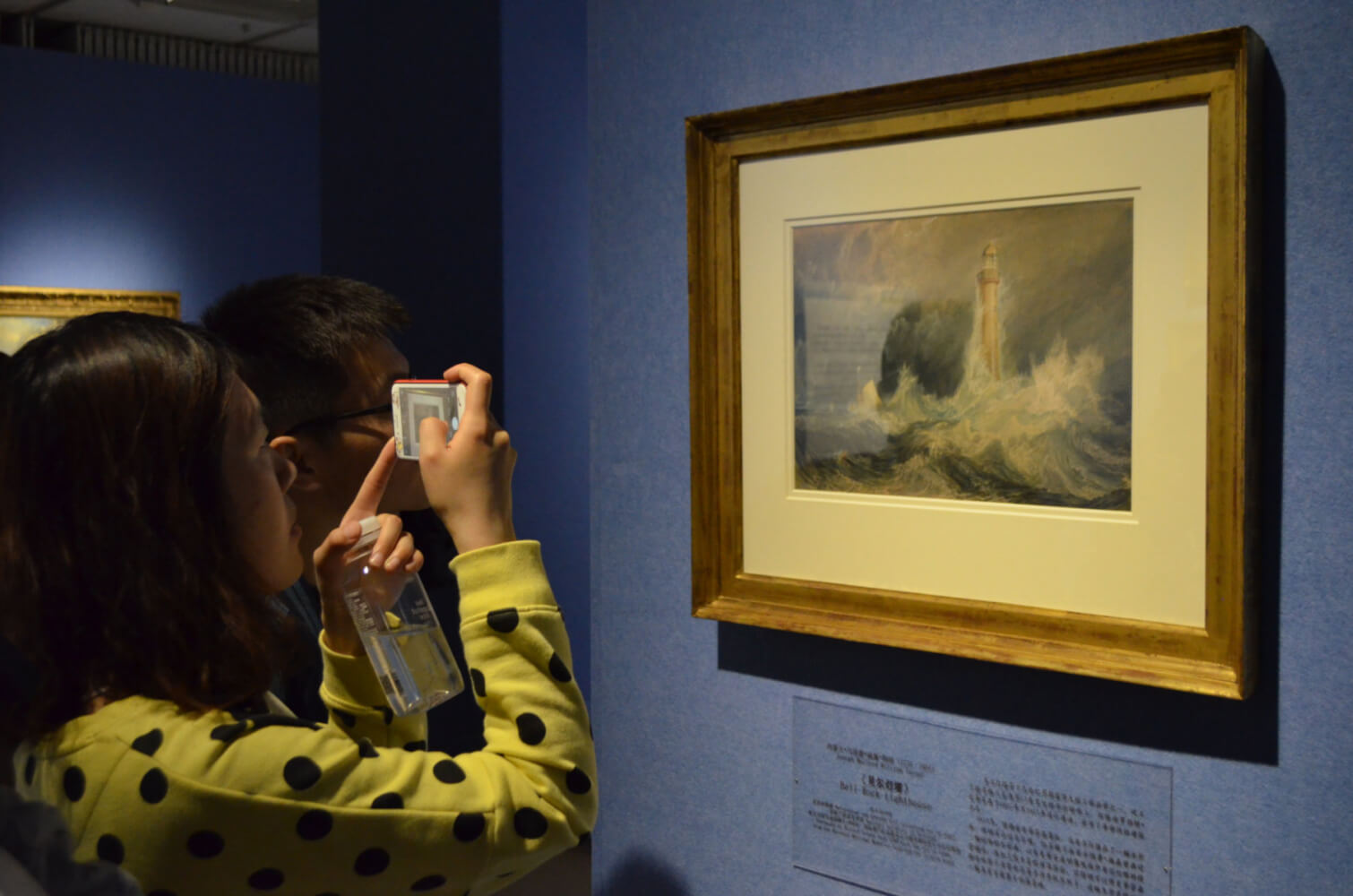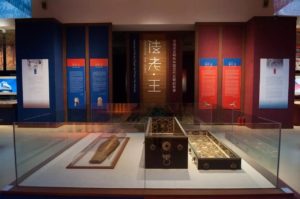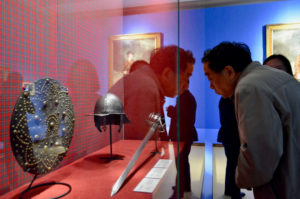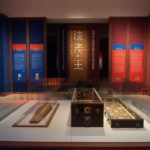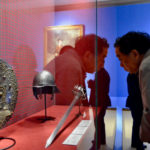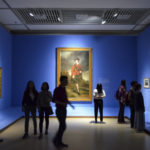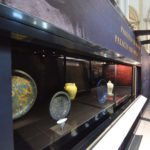Teo: The past decade has seen the rise of exhibitions travelling to and from China. In particular, the presentation of international collections through major exhibitions has gradually become a key aspect of the programme strategy for an increasing number of cultural institutions in China. Starting in major cities, this trend is now being adopted by more and more institutions throughout the country. This growing number of presentations of international treasures and stories seems to coincide with the rising interest of local audiences who tend to visit museums more often, with a “renewed interest in cultural pursuits”1, combined with “China’s museum boom”2, an ambitious national museum programme that has led to the creation of many new museums throughout the country since the beginning of the millennium.
How would you describe what is happening at the moment?
Wu Heng: I would call it a golden age of Chinese museums and their international collaborations. China is currently embracing an unprecedented museum boom, as seen in the springing out of new museums, long queues at museum entrances, crowded galleries, and trending discussions on social media. Going to museums and seeing exhibitions have become ‘the in thing’. This is very good for museums, and for museum people, as it creates great opportunities. In order to meet the increased interest and passion of their audiences, museums are doing their best to create diversified exhibitions such as, on the one hand, international exhibitions, including exhibitions borrowed from foreign museums and exhibitions developed in-house but featuring international loans. On the other hand, the museum boom – or the development of museums – has also brought changes to the mind-set of museums and museum people. One of the major changes is the recognition of and emphasis on the audience, which I would like to call the generation of an audience mind. With this audience mind, broadening the audience community and increasing access to exhibitions becomes one of the priorities of the curators and the developing team when making exhibitions. Sending exhibitions abroad to reach new audiences fits quite well in this mission. Most Chinese museums are now happy and eager to look for international partners with whom to work on exhibitions. Before, international collaborations were mainly seen in the form of foreign museums borrowing collections from Chinese museums. But now, both ways are booming and Chinese museums are also looking for collections or exhibitions from international museums to borrow. For these reasons, I think this is a really good time for international museum collaborations.
One of the major changes is the recognition of and emphasis on the audience, which I would like to call the generation of an audience mind.
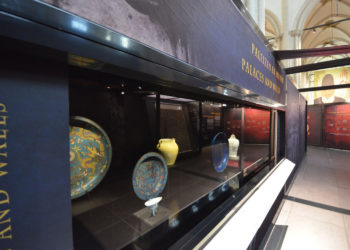
In this profuse cultural landscape, we wonder if it is possible to identify key trends in the hosting of international exhibitions within Chinese institutions, beyond the variety of purposes and resources of individual venues. Are there shared core incentives that lead Chinese institutions to choose to host a touring exhibition rather than produce their own? What could be the key ingredients that would lay the foundations for a successful partnership with cultural partners in China?
The World History in 100 Objects from the British Museum, which was presented in 2017 at the National Museum of China in Beijing and at the Shanghai Museum, was a very popular exhibition in China. People were very excited to see it; it was a real blockbuster. Coming from a world-famous museum is definitely a strong incentive on the Chinese market. Because these institutions are well known in China. And they have powerful collections with works from great masters; names with which Chinese audiences are familiar. Cultural institutions in China are looking for these major profiles and for iconic original objects that have the potential to interest local audiences. When the Nanjing Museum hosted the exhibition Romantic Scotland in 2016, we negotiated with the lender – the National Galleries of Scotland – for the addition of two major artworks that we knew would draw visitors to our museum. It is not a must have but it certainly makes a difference.
Cost consideration is also a main concern. The proposed fee needs to be very competitive. Museums are particularly attentive to projects which are already travelling to China, since sharing costs with other venues in the region really helps to reduce the overall production budget. But of course, for some large leading museums where funding is not a big concern, they would probably prefer to borrow collections, rather than well-developed exhibitions, to fit into their own curatorial framework so as to produce “original exhibitions”. For example, the Nanjing Museum borrowed 110 pieces from the Royal Ontario Museum’s Egyptian collections for the curation of its Pharaohs and Kings exhibition, which also featured over 200 objects from China’s Han Dynasty (206 BC – AD 220), mainly from the Nanjing Museum’s own collection with some loans from other museums in China, and which were on show at the Nanjing Museum from August 2016 to January 2017. The Shanghai Museum has also been doing a great job of borrowing collections from world museums to develop its own exhibitions.
In terms of topics, is it important that the project boasts a local connection: does it need to be connected in some way to Chinese history and culture?
There is always interest in collections related to the history of China coming from foreign institutions. Cultural institutions in China are keen to bring these treasures home and to share them with their local audiences. But the discovery of other cultures and major civilisations is actually the main reason why we need international travelling exhibitions. Foreign stories attract the public to our museums. And in that sense, international travelling exhibitions are very important because they make it possible for local audiences, who do not always have opportunities to travel abroad, to learn about and appreciate other cultures and other civilisations. If you have international collections coming to your local museums, you don’t need to travel to see the whole world.
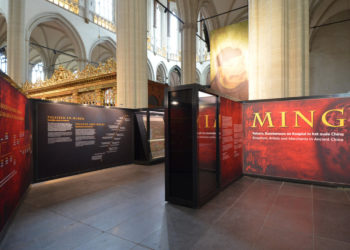
What is essential is to find the relevance of these objects or topics to the local people . It is relevance that leads to interest. Or, to borrow a popular saying: relevance is king.
But you cannot just bring those international objects or topics home and put them on display in your galleries. What is essential is to find the relevance of these objects or topics to the local people. It is relevance that leads to interest. Or, to borrow a popular saying: relevance is king. Here, we are touching on an issue that I would call “the localisation of travelling exhibitions”. I discuss this in more detail in the chapter The Remote Local (Wu, 2019) of the book Museums and Communities: Diversity, Dialogue and Collaboration in an Age of Migration3, edited by Viv Golding and Jen Walklate in 2019.
What are the most effective ways of building that encounter between the diversity of audiences in China and these international projects?
I think that understanding local audiences and their tastes is very important. It doesn’t mean we have to compromise to their taste. But being familiar with them and working on making the topic relevant to them is key. The exhibition team actually needs to engage with them even before the exhibition is actually displayed in the museum, to ignite prior knowledge and start building the connection. When we took our Ming dynasty exhibition to the Nieuwe Kerk, a major cultural institution in Amsterdam, the hosting team organised a press visit to Nanjing for a group of journalists from Amsterdam. These journalists had the opportunity to meet our curatorial team and Ming specialists, visit our museum and the collection storage. They then shared stories about China, the Ming Dynasty and this unique exhibition that was coming from China. Starting to share the story through media like this is a very good way to set up a connection with local audiences.
In the exhibition itself, what in your experience works well to build that connection with local audiences in China?
Creating a curatorial dialogue. For instance, when the director of the Nanjing museum and I visited the Royal Ontario Museum in Toronto, our attention was caught by its wonderful Egyptian collections, which included fascinating animal mummies. These magical Egyptian animal mummies reminded us of the pottery animal figurines in our own collection that were unearthed from tombs of the Han Dynasty. They had been placed in the tombs to accompany the deceased. With the idea of bringing together Egyptian treasures and Chinese Han dynasty collections into one exhibition, a comparative approach on the topic of afterlife was taken with this project. The Han Dynasty, which is familiar to the local audiences, became a medium or a bridge to connect audiences with the topics, making the exhibition more interesting and more accessible to them. The exhibition turned out to be a great success with over 30,000 visits during a five-month showing period.
How are international touring exhibitions such as the Egyptian Han project usually hosted in China? Do cultural institutions tend to favour turnkey productions or do they prefer tailored exhibits?
Here we are talking about two scenarios: loaning exhibitions and loaning collections. As I have mentioned, some large leading museums have a sufficiently abundant budget and adequate curatorial capacity to prefer borrowing collections rather than complete exhibitions for use in their own curatorial work. Modest scaled museums with limited resources may opt for turnkey productions. But even in the scenario of borrowing an entire exhibition, the host museum would go to a lot of trouble to tailor the exhibition to the local context. When an exhibition that has travelled to China is being displayed in different museums, it generates, I should say, different exhibitions, telling different stories. Each museum has its own perspectives and ways of using these collections. Local teams want the content to be adapted in dialogue with their curators. Most of the time, they also want to create their own design with their in-house design team, which most museums have. Sometimes, the lending institution may not allow any changes to be made to the curatorial part. But even with this restriction, localisation of the exhibition can also be achieved through, for example, educational programmes, interpretative activities, or graphic design.
So I think it is more meaningful to adopt a co-curation model, which requires curatorship from both collaborating institutions. Under this model, curators from both sides work closely together throughout the entire curating process – even when selecting the exhibition theme. This is the most challenging model, as it requires a high degree of cooperation from two culturally different institutions. It is also, however, the most fruitful as it provides a more extensive scope of institutional collaboration and cultural communication and is therefore the form of international collaboration preferred by Chinese museums, such as the Nanjing Museum.
Through this collaboration on exhibitions with international partners, we can benefit and learn from the diversity of storytelling and exhibition curation practices. Before, Chinese museums were really focused on objects, not so much on stories. With international exhibitions, museums are inspired to present collections in a more interesting or more audience-friendly way and to make them more accessible to the general public.
Through this collaboration on exhibitions with international partners, we can benefit and learn from the diversity of storytelling and exhibition curation practices.
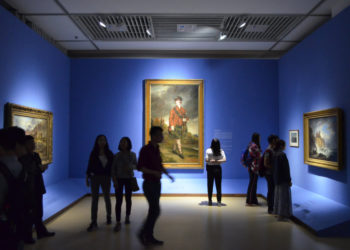
In the development process of the actual tour, what do you feel is critical to ensure the success of the exhibition production?
The most important thing is for people to have a shared will to create something together and the shared belief that they can succeed. Once both sides have this strong belief, they can overcome any obstacle, any challenges. And for this to happen, it is important for people in different countries to get to know their counterparts in other countries. By “to know”, I mean seeing things with your own eyes and meeting your collaborating partners in person. Once you have eventually travelled to China and visited the museum facilities and talked with museum colleagues there, I think you will totally change and build a different view on what it means to work with the Chinese museums.
I would therefore really encourage international museum producers, museum people, if they have a chance, to go to China to discover the galleries, the museum workers, the audiences and the latest museum innovations there. This helps a lot in international collaborations because it helps get rid of prejudices and understand different standards and criteria in exhibition making. Meeting the partner team in person and seeing the venues in real life really helps to build trust.
How do you think collaborations on exhibitions between Chinese and international organisations will be fostered in the coming years?
Overall, it is critical to have opportunities to meet and get to know each other. Exchange programmes, sister museum programmes and conferences represent an essential source of success for international collaborations. For example, about two years ago, the Nanjing Museum worked with the American Federation of Arts and the Asian Society in New York to hold a high-level summit where 15 museum directors from China came to New York to meet about a dozen international museum directors. The summit was an invaluable opportunity for both the Chinese and international museums to get to know each other, to know what lies in museum storages or what we all had in our curators’ minds – what we could borrow from them and what they could borrow from us.
These international events are very good and effective ways to promote international collaborations on museum exhibitions. In the same way, sister museum programmes often lead to the signature of 5-year memorandums, which often imply the exchange of exhibitions. Joint research programmes, collaborations on conservation projects for example, can also lead to the development of exhibitions, which can be toured to all partner institutions.
Make friends first, then collaborate. It’s really about long-term trust. Exhibitions should be understood as only one part of international collaborations. They should be considered as a way to promote more profound communications or dialogues between museums in China and cultural institutions in other countries.
Sources
1 Pinghuin, Z. (2017, September 30). Chinese museums impose strict rules as visitors flock to blockbuster art exhibitions. Retrieved July 9, 2019, from https://www.scmp.com/news/china/society/article/2113290/chinese-museums-impose-strict-rules-visitors-flock-blockbuster
2 Shepard, W. (2019, June 21). Why China Has Hundreds Of Empty ‘Ghost’ Museums. Retrieved July 9, 2019, from https://www.forbes.com/sites/wadeshepard/2019/06/20/why-china-has-hundreds-of-empty-ghost-museums/
3 Heng, W. (2018). Museums and Communities: Diversity, Dialogue and Collaboration in an Age of Migrations. In V. Golding, & J. Walklate (Eds.), The Remote Local: Travelling Exhibitions and New Curatorial Practices in China (pp. 156–170). Newcastle, United Kingdom: Cambridge Scholars Publishing.
Exhibitions mentioned
The World History in 100 Objects, the British Museum
Ming: The Golden Empire, Nanjing Museum and Nomad Exhibitions
Romantic Scotland, National Galleries Scotland, Historic Environment Scotland, Nanjing Museum and Nomad Exhibitions

About Wu Heng
Wu Heng is a museum scholar and cultural exchange specialist from China. She designs international programmes of collaboration between Chinese museums and leading cultural institutions in Europe and North America. As Deputy Director of the Cultural Exchange Centre at China’s Nanjing Museum, she led the institution’s international programmes from 2011 to 2018 and has overseen the development of major exhibition projects and academic programmes worldwide. She is now working for the Royal Ontario Museum on an upcoming special exhibition, which will feature major loans from museums in China.

